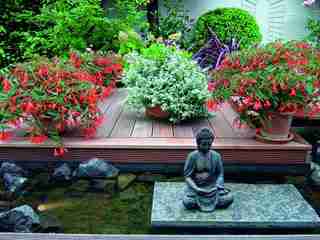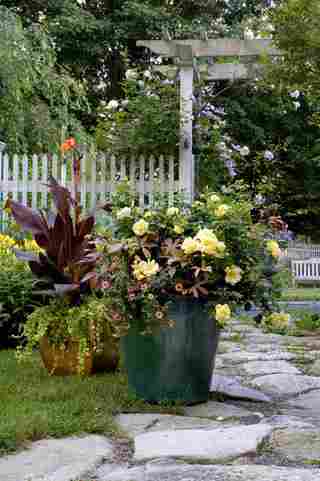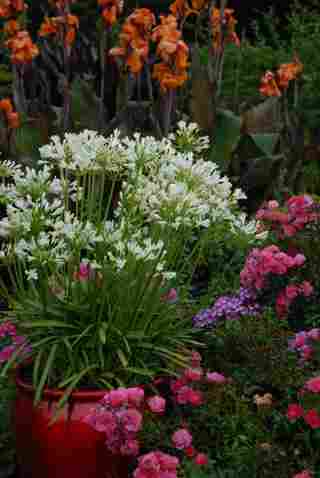If you’re not a natural green thumb, the idea of gardening can be a little overwhelming. Understanding the nuances of garden design, plant varieties, and care can be enough to deter you from giving it a go. This is why container gardens are a great solution for beginners. Plants in pots allow you almost unlimited design flexibility and are relatively easy to take care of. “Potted plants are versatile and movable,” says Judie Brower of Tesselaar Plants . “They can fit well with an existing garden as fillers, or they can comprise your entire garden on a porch or rooftop.”
To get started, choose a few large pots that are at least 18 to 24 inches tall, which will give plants plenty of room to thrive. Fill your pots two-thirds of the way with potting soil—a lightweight mix will hold moisture well. Next, plant. Consider a single showstopping plant, such as a blooming shrub rose. For a lush look, fill in around it with smaller plants, leaving room for a couple of trailing plants to spill over the sides. Water well and you’re done. Here are more tips to help you dive into your very own container garden.

Let beautiful plants stand alone. Instead of combining several plants in one pot, try putting just one in each of several pots and staging them in a striking arrangement. Choose plants that have complementary colors and textures for dramatic effect. Here, Bonfire begonia is juxtaposed with the shimmering silver foliage of licorice plant.

Group plants of various heights. Here’s a good recipe for containers: Start with a thriller, add fillers and then spillers. In the green pot, Flower Carpet Yellow rose (thriller) is planted with bronze sweet-potato vine (filler) and apricot million-bells (spiller). In the smaller pot, Tropicanna canna lily is the thriller and the spiller is golden-leaf Lysimachia.

Plant a single variety. Pots holding one type of plant are showy accents in a garden . They can fill in gaps in a flower bed or bring color and fragrance up onto a porch or patio. Choose long-blooming plants, such as this Snow Storm agapanthus, which blooms for more than two months.
